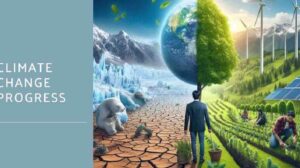Healthbeautyidea.com | What is Environmentalism? The environment is all external factors that affect an organism, these factors can be biotic factors or abiotic factors.
The environment as a unit of space with all objects, power, circumstances of living beings, including humans and their behavior, affects nature itself. In ecological science, nature is seen as intertwining life systems that are interconnected with each other.
This means that every living being is in a process of self-adjustment in the living system that is influenced by the principles in the survival of ecological life. Here’s what the environmentalism means and their types:
What is Environmentalism?
The encyclopedia English states that the environment is the factors that make up the environment around the organism, especially the components that influence the behavior, reproduction and sustainability of the organism.
Environmentalism Types
Natural Environment
The natural environment is an environment that exists and is formed from natural processes without human intervention and consists of natural sources.
These natural resources include ecosystems as well as various physical components such as biological elements.
In a natural environment, the level of diversity of living beings is also very high.
Examples of this natural environment such as mountains, lakes, seas, rivers, swamps, to forests.
The sustainability of the natural environment must be maintained properly, because this environment is a support for human life.
Artificial Environment
In contrast to the natural environment, an artificial environment is an environment created by human hands and pre-planned.
This artificial environment is also created with the help of modern technology in order to function properly.
The purpose of this artificial environment was to create a new circle that was habitable to humans.
An example of this artificial environment is the reclamation island, where it was created as a solution to overcome land limitations.
Environmentalism examples
Talking about the environmental elements would not be complete without talking about natural and artificial environments.
First, the natural environment is a natural environment that already exists without human intervention. Examples of this type of environment are weather, climate, landscapes, mineral rocks, soil, natural vegetation, native animal life, microorganisms, surface and subsurface waters. Similarly oceans, beaches, geological positions, territorial forms, geographical locations.
However, it is difficult to find a truly natural environment. The natural environment will vary on a continuum, from ideally between one hundred percent natural to another pendulum point of zero percent natural. The natural degree of an environment will not be uniform.
In addition to the natural environment is an artificial environment. Artificial environments are created because of human intervention. Areas where humans change landscapes such as urban, agricultural land, then the natural environment has been reduced. Examples of this environment are dams, artificial lakes, animal parks and others.
Environmentalism Benefits
With his abilities, human can not only adjust. However, humans can also harness the potential of the environment to further develop their quality of life. For humans, other than as a place to live.
Environmentalism can also be used as:
- Basic materials producing media (clothing, food, and housing
- Socializing and interacting with other living things or humans
- Energy sources
- Sources of materials that can be utilized to support human survival; and
- Ecosystem media and preservation of flora and fauna and other natural resources that can be protected for preservation.
Read also:
Global Environmental Issues and Causes
Environmentalism conservation efforts
Environmental conservation efforts can be done in the following ways.
- Conduct soil processing according to the condition and capability of the land, as well as regulate irrigation or drainage systems so that the flow of water is not inundated.
- Provide special treatment to waste, such as being processed first before disposal, so as not to pollute the environment.
- Reforestation of critical, barren and bare land, as well as selective cutting or cropping systems so that the sustainability of forests, coastal water sources, and fauna in it can be maintained.
- Creating and using environmentally friendly industrial products.
- Supervise and evaluate the behavior of forest management rights so as not to exploit forests massively.
What is environmentalism? Watch the following explanation video.


